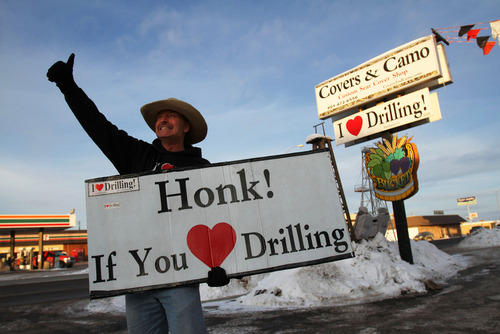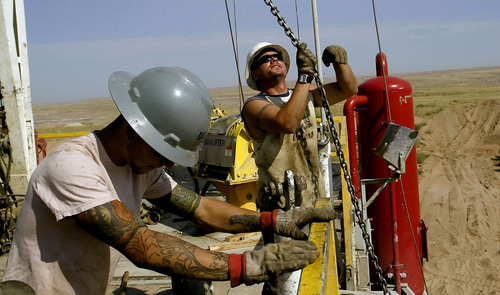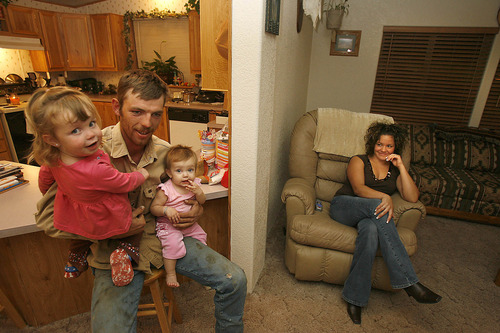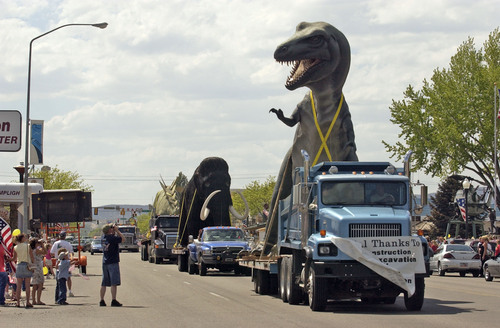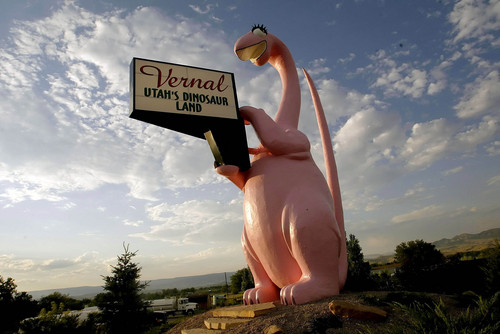This is an archived article that was published on sltrib.com in 2014, and information in the article may be outdated. It is provided only for personal research purposes and may not be reprinted.
The Uinta Basin oil boom has made Duchesne County the nation's second fastest-growing (for counties with at least 10,000 people), and Vernal the nation's sixth fastest-growing "micropolitan area" of 10,000 to 50,000 people.
That mirrors a national trend in which most of the fastest-growing places are in oil and gas boom areas, according to estimates released Thursday by the U.S. Census Bureau.
"Mining, quarrying, and oil and gas extraction industries were the most rapidly growing part of our nation's economy over the last several years," said Census Bureau Director John H. Thompson. "A major reason was the energy boom on the Plains, which attracted job seekers from around the country."
Oil areas in eastern Utah are also booming.
Duchesne County saw 5½ percent population growth in 2013 — eight times faster than the 0.7 percent national average, and 3½ times faster than Utah's average of 1.6 percent. The Vernal micropolitan area had a 2.9 percent growth rate.
Six of the nation's 10 fastest-growing metropolitan areas in 2013 were near oil-boom areas: Fargo and Bismark, N.D.; Odessa, Midland and Austin-Round Rock, Texas; and Casper, Wyo.
Eight of the 10 fastest-growing micropolitan areas were also in boom areas: Vernal; three in North Dakota; two in western Oklahoma; and one each in Texas and New Mexico.
—
Basin boom • State Sen. Kevin Van Tassell, R-Vernal, who represents the Uinta Basin and is a banker, outlines some of the ways the boom is making life interesting there.
Roads are crowded. He said Cody Stewart, the governor's energy adviser, spoke Tuesday to the Chamber of Commerce in Vernal, "and he said, 'It took me 10 minutes to turn left to get across the highway and into Golden Corral.' "
Van Tassell said a building boom is occurring, especially among hotels that cater to oil-field workers.
"It's amazing how many people commute from the Wasatch Front," he said. "The hotels have been averaging close to 90 percent occupancy for several years."
Van Tassell said oil field workers tend to stay in hotels Monday through Thursday, "then head home for the weekends, and the rooms open up for the tourists."
Pam Perlich, senior research economist at the University of Utah, says much of the boom likely is not yet reflected in population numbers because workers are temporary and commute — and population numbers likely count them as residents elsewhere. "So the data footprint," she said, "is really just a tiptoe."
Unemployment is low there, at or under 3 percent. "It's almost too good. Affordable housing is a problem that keeps some people from moving," Van Tassell said. "There's a family that moved into my neighborhood.
He commuted for two years from Salt Lake and finally found a house they could afford and moved out."
Van Tassell said local governments are expanding water lines, schools and roads to keep up with growth. "It seems under control so far," he said.
Perlich says the basin has "a history of boom and bust. It's not necessarily permanent population coming in," and the temporary influx of mostly male adult workers may give local governments time to keep pace with new demands in such things as schools.
Van Tassell — who has also lived through bust times in the basin — says he hopes this boom will be long lasting. He said high oil prices are driving it now, but demand for natural gas is also increasing and could bring more stability to energy demands.
—
Coal-country expansion • Basin officials are also working with counties to the south — including Carbon, Emery and Grand — hoping they can handle some of the boom, he said. They are working on new highways from that direction into oil fields to take some pressure off heavily used U.S. 40.
Expanding growth to the south could help address worsening air pollution in the basin, and spread out demand for housing and schools. Also, the coal-mining industry important to those southern counties is declining.
In fact, Carbon and Emery counties lost population last year.
Perlich said the new data show international immigration and births and deaths in Utah are flat — but domestic in-migration is up, especially in Davis, Utah and Salt Lake counties. She said they are showing slow, steady growth that is sustainable.
"Utah is on the move," she said.
Washington County is finally achieving significant net in-migration it had not seen since before the recession, she said.
But some areas with little or no in-migration are surprising, including in Cache and Iron counties.
Perlich guesses that lower Mormon missionary age limits may have led to fewer college students and changed migration in those college counties — or that an improving economy may see more people choosing jobs over school.
Another boom of sorts hit Heber City and Wasatch County.
Heber was the nation's third fastest-growing micropolitan area — faster than even Vernal — and Wasatch was the nation's seventh fastest-growing county.
It's not oil, "but clean air and great views," Heber City Mayor Alan W. McDonald said. "It's a great selling point."
He says the area has become a distant suburb for Utah and Salt Lake counties. Perlich said it is also a cheaper housing area for people who work in Park City.
"A lot of people come from the valleys," McDonald said, "to try to get away from the smog and pollution and get to the open space." —
2013 population
• Duchesne County, up 5.5 percent, No. 2 in nation.
• Vernal micropolitan area, up 2.9 percent, No. 6 in nation.
• National average: 0.7 percent growth.
• Utah average: 1.6 percent growth.
Detailed numbers for all Utah counties, metropolitan and micopolitan areas available at sltrib.com




